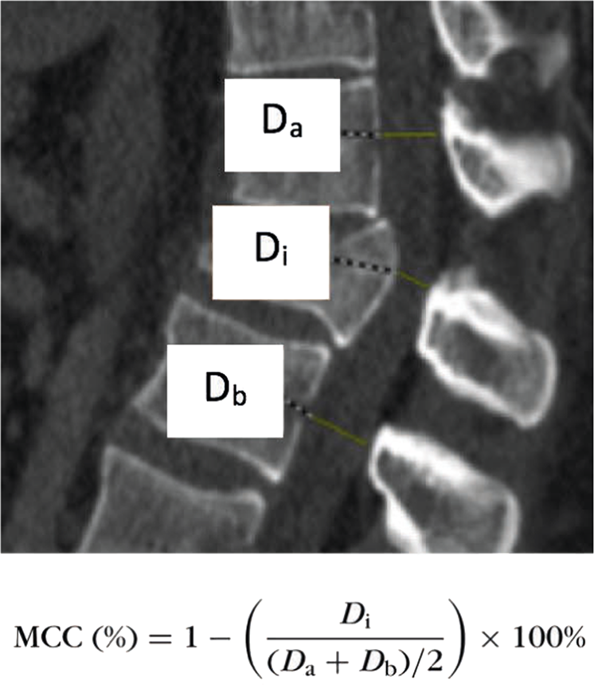当前位置:
X-MOL 学术
›
Spinal Cord
›
论文详情
Our official English website, www.x-mol.net, welcomes your
feedback! (Note: you will need to create a separate account there.)
The use of classification and regression tree analysis to identify the optimal surgical timing for improving neurological outcomes following motor-complete thoracolumbar traumatic spinal cord injury.
Spinal Cord ( IF 2.1 ) Pub Date : 2020-01-28 , DOI: 10.1038/s41393-020-0412-z Julien Goulet 1, 2, 3 , Andréane Richard-Denis 1, 2, 3 , Jean-Marc Mac-Thiong 1, 2, 3
Spinal Cord ( IF 2.1 ) Pub Date : 2020-01-28 , DOI: 10.1038/s41393-020-0412-z Julien Goulet 1, 2, 3 , Andréane Richard-Denis 1, 2, 3 , Jean-Marc Mac-Thiong 1, 2, 3
Affiliation

|
STUDY DESIGN
Observational cohort study.
OBJECTIVES
To identify the optimal surgical timing for improving neurological outcomes in patients that sustained a motor-complete traumatic spinal cord injury (TSCI) secondary to a thoracolumbar injury.
SETTING
Level 1 trauma center specialized in TSCI care.
METHODS
We prospectively analyzed clinical data of 35 patients admitted for motor-complete TSCI secondary to a thoracolumbar injury. We quantified neurological recovery with three different outcomes: the improvement of at least one grade on the American Spinal Injury Association Impairment Scale (AIS), of at least one neurological level of injury (NLI), and of at least 10-points on the motor score (MS). Classification and regression tree analysis was used to identify outcome predictors and to provide cutoff values of surgical timing associated with recovery.
RESULTS
The proportion of the patients improving by at least one AIS grade was higher in the group undergoing early surgery within 25.7 h of the TSCI (46% vs 0%). The proportion of patients that improved by at least one NLI was also higher in the group undergoing early surgery within 21.5 h of the TSCI (71% vs 18%). Lastly, 25% of the AIS grade A patients undergoing early surgery within 25.6 h of the TSCI improved 10 MS points or more as compared with 0% in the other group.
CONCLUSIONS
Earlier surgery was effective in improving neurological outcome in motor-complete TSCI at the thoracolumbar levels. Performing surgery within 21.5 h from the traumatic event in these patients increases the likelihood of improving the neurological recovery.
SPONSORSHIP
This study was supported by the Fonds de Recherche du Québec-Santé (FRQS), Department of the Army-United States Army Medical Research Acquisition Activity, Rick Hansen Spinal Cord Injury Registry and Medtronic research chair in spinal trauma at Université de Montréal.
中文翻译:

使用分类和回归树分析来确定最佳的手术时机,以改善运动完全性胸腰椎创伤性脊髓损伤后的神经系统结果。
研究设计观察性队列研究。目的确定最佳的手术时机,以改善继发于胸腰椎损伤的运动完全性创伤性脊髓损伤(TSCI)的患者的神经功能。地点专门从事TSCI护理的1级创伤中心。方法我们对35例因胸腰椎损伤继发的运动完全性TSCI入院的患者进行了前瞻性分析。我们量化了神经恢复的三种不同结果:美国脊髓损伤协会损伤量表(AIS)至少提高了一个等级,神经损伤至少达到了一种(NLI)以及运动能力至少得到了10分分数(MS)。分类和回归树分析用于确定结果预测指标,并提供与恢复相关的手术时机的临界值。结果在TSCI的25.7小时内接受早期手术的组中,至少获得AIS等级改善的患者比例更高(46%比0%)。在TSCI的21.5小时内接受早期手术的组中,至少采用一种NLI改善的患者比例也更高(71%比18%)。最后,在TSCI的25.6小时内接受早期手术的AIS A级患者中,有25%改善了10 MS点或更多,而另一组为0%。结论在胸腰椎水平,早期手术可有效改善运动完全性TSCI的神经系统预后。在21岁以内进行手术。在这些患者中,距创伤事件5 h的时间增加了改善神经功能恢复的可能性。赞助这项研究得到了魁北克省桑德基金会的支持,陆军-美国陆军医学研究获取活动部,里克·汉森脊髓损伤登记处和美敦力大学蒙特利尔创伤研究中心的研究主席。
更新日期:2020-01-28
中文翻译:

使用分类和回归树分析来确定最佳的手术时机,以改善运动完全性胸腰椎创伤性脊髓损伤后的神经系统结果。
研究设计观察性队列研究。目的确定最佳的手术时机,以改善继发于胸腰椎损伤的运动完全性创伤性脊髓损伤(TSCI)的患者的神经功能。地点专门从事TSCI护理的1级创伤中心。方法我们对35例因胸腰椎损伤继发的运动完全性TSCI入院的患者进行了前瞻性分析。我们量化了神经恢复的三种不同结果:美国脊髓损伤协会损伤量表(AIS)至少提高了一个等级,神经损伤至少达到了一种(NLI)以及运动能力至少得到了10分分数(MS)。分类和回归树分析用于确定结果预测指标,并提供与恢复相关的手术时机的临界值。结果在TSCI的25.7小时内接受早期手术的组中,至少获得AIS等级改善的患者比例更高(46%比0%)。在TSCI的21.5小时内接受早期手术的组中,至少采用一种NLI改善的患者比例也更高(71%比18%)。最后,在TSCI的25.6小时内接受早期手术的AIS A级患者中,有25%改善了10 MS点或更多,而另一组为0%。结论在胸腰椎水平,早期手术可有效改善运动完全性TSCI的神经系统预后。在21岁以内进行手术。在这些患者中,距创伤事件5 h的时间增加了改善神经功能恢复的可能性。赞助这项研究得到了魁北克省桑德基金会的支持,陆军-美国陆军医学研究获取活动部,里克·汉森脊髓损伤登记处和美敦力大学蒙特利尔创伤研究中心的研究主席。











































 京公网安备 11010802027423号
京公网安备 11010802027423号